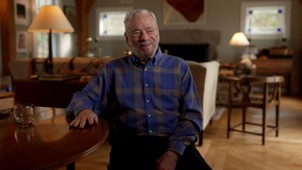Did you hear the story about …..? Nearly always captures people attention and curiosity.
Can I list my reasons about….? Often make the audience shut down.
I would like to share a couple of stories about how Stephen Sondheim and Hillel share stories.
Did you hear the story when Stephen Sondheim shared his story about West Side Story?
When Stephen Sondheim was interviewed about the Revival of West Side Story in 2021, 64 years after its initial debut in 1957, a reporter asked what he thought was the reason that West Side Story remained popular. The reporter also asked Sondheim how he felt about some of the recent changes to the characters and adaptation to the current decade.
Approaching 91 years old, Sondheim said that he learned a lot as he reflected on his life. He said that the various script revisions really did not impact the meaning or appeal of West Side Story. The reporter asked. “So what is the Story of “West Side Story”? Sondheim thought for a moment. “Let me see if I can put this succinctly,” he said, taking a sip of his wine. “It’s about a young man who grows up by falling in love, and it kills him.” That is the story – timeless pursuit of love. All of the other aspects of the play are the Plot. They really do not matter. It is the story that we remember. The details of the plot are an afterthought.

Did you hear the story about when Hillel taught a student the Torah while standing on one foot?
There was another incident involving one gentile who came before Shammai and said to Shammai: Convert me on condition that you teach me the entire Torah while I am standing on one foot. Shammai pushed him away with the builder’s cubit in his hand. This was a common measuring stick and Shammai was a builder by trade. The same gentile came before Hillel.
Hillel converted him and said to him: “That which is hateful to you do not do to another; that is the entire Torah, and the rest is its interpretation. Go study.” (Talmud, Shabbat 31a)
These stories both highlight the difference between a story and a plot. The story is the core backbone that resonates with the audience. The plot is all the details and scaffolding affixed to this core. Both Sondheim and Hillel understood that the true story in narrative is its simple truths that grip our emotions and imaginations.
Story Telling Exercises:
I would like to share two exercises you can do to help you tell your own story.
Story Pose:
Place your mobile phone on a table and prepare to record a video of yourself.
Stand on one leg in a yoga tree pose with your hands in the air.

Press record and get back in pose and for 30 seconds and tell your story aloud.
Repeat the previous step 2-3 times.
Listen to your stories and write the words down.
You can then determine your key message.
Why stand on one foot with you hands in the air?
Hillel taught the student the torah standing on one foot in Shabbat 31a.
Standing on one foot makes you focus on the essence of the story and not get lost in the plot. It forces you to speak in a concise manner. When you have to concentrate on balancing you can’t meander into long winded and unnecessary explanations and details.
In addition, the combination of standing on one foot and raising your hands in the air creates pressure and anxiety. This nervous anxiety can replicate the feeling of public speaking in front of an audience. On the other hand, sitting on your couch is too comfortable. Standing on one leg with your hands in the air like a tree pose simulates the experience of presenting publicly to an audience.
Dream cards
This is another exercise of sharing a story in a group setting. In this case, it is a short and concise dream that you are sharing. The short message on the dream card focuses on the Story and does not allow you to get lost in the plot. You can read more about this memorable creative exercise here.
My personal footnote:
My mom, Myra Yellin Goldfarb Outwater (of blessed memory), taught me and my brothers our love of Broadway. We saw all of Stephen Sondheim’s Broadway shows and listened to his music over and over again while my mom drove us around in her car. Myra was a Drama Desk Award writer for over 50 years and never once missed a weekly deadline.
Steve Jobs talking about Pixar and storytelling
Steve Jobs said “no amount of technology will turn a bad story into a good story” and that Pixar’s early films had to prioritize a good story because the cost of animating was so high. He also shared insights into Walt Disney’s approach to storytelling. You can see more of his story insights here.
Further reading
- You can read more about Stephen Sondheim’s interview here and here.
- You can read more about Hillel’s story here and here.





